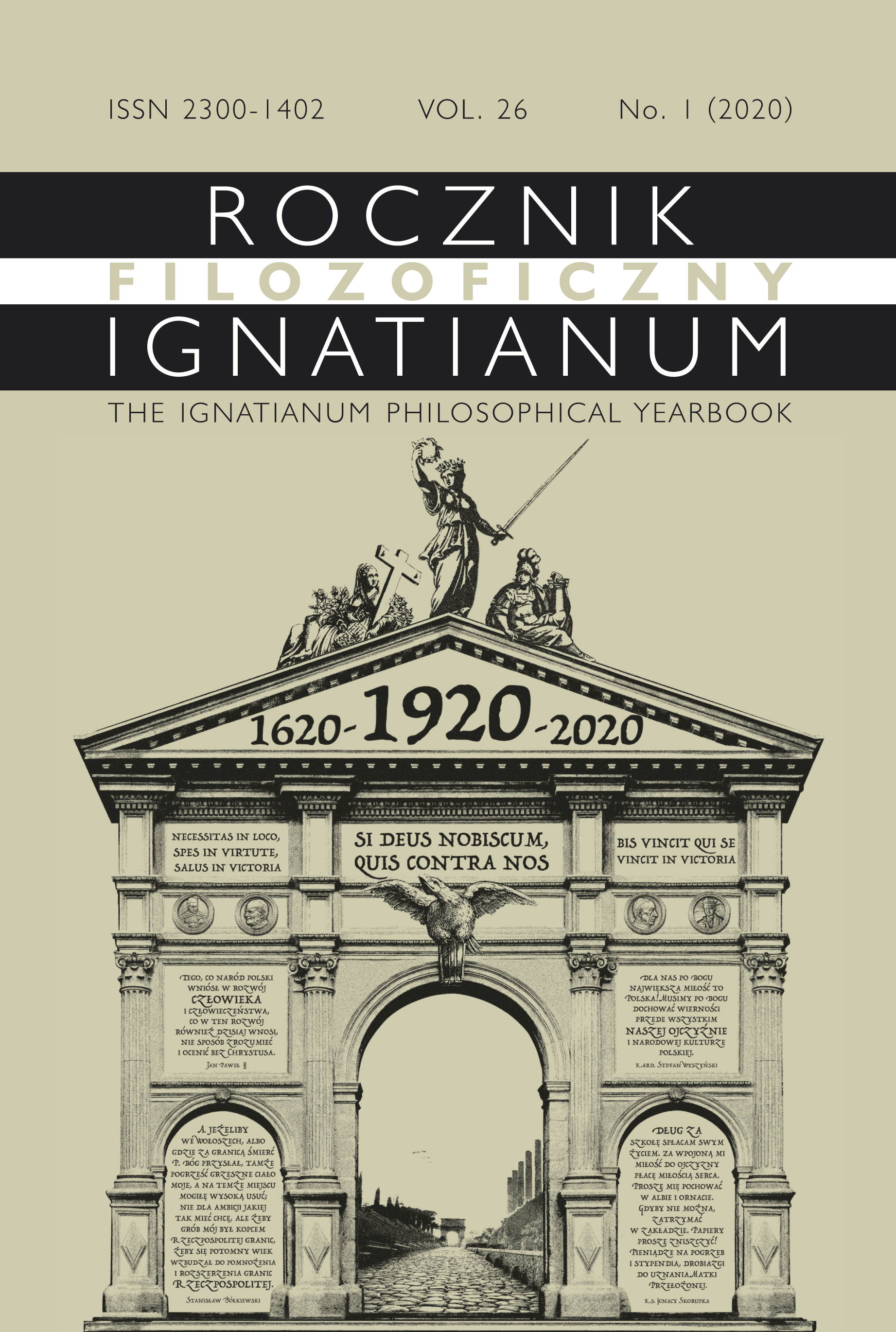Introduction
Abstract
The graphic design of this issue of The Ignatianum Philosophical Year- book front cover includes the entrance gate to the Wawel Royal Castle in Krakow. The gate itself is transformed into a triumphal arch opening towards the road recognizable to every person who feels a bond with the cultural heritage of the Western world. This road is the via Appia, once built by the will of Appius Claudius Caecus, and considered one of the oldest Roman tracts. Called “the queen of all roads” by the Romans them- selves, it is inseparable from the Eternal City for everyone raised on the values of Western civilization. Mikołaj Sęp-Szarzyński wrote about it in his famous epitaph: “today in Rome defeated, Rome invincible,” express- ing this way the overwhelming awareness of connecting the past with what we experience as the present. It was on this road that the legendary scene recalled by Henryk Sienkiewicz took place, in which the question: quo vadis, Domine? is asked by the apostle Peter, fleeing from the Eternal City, to Christ he meets on the Appian Way. The power of this question is understood by anyone who is able to see in the roots of Classical and Christian culture all that is the most important for the Western culture not only in terms of its past, but also in terms of its future.
Copyright (c) 2021 Jesuit University Ignatianum in Krakow

This work is licensed under a Creative Commons Attribution 4.0 International License.
The Yearbook only accepts materials for publication that are free of all conflicts of interest, and that in no way involve conflicts over authorship, copyright, etc. The Editors will take action against any cases of plagiarizing, ghostwriting1, guest/honorary authorship2, etc. Where co-authored work is concerned, the Author listed first is expected to take responsibility for the submission, and is required to make clear the contributions of all of the Co-Authors involved. In the event of the publication owing its existence to funding dedicated to this purpose, this fact should be made clear: e.g. in any note of thanks/acknowledgement, or in a footnote, etc. Explicit notification should be given of any form of reprinting, with the appropriate evidence of permission to publish being furnished as required. Any impropriety on the part of Authors/Reviewers risks exposing them to appropriate responses from the relevant institutions.
______
1 This term refers to instances of a person who has made an essential contribution being omitted from the list of authors, or from notes conveying gratitude and/or acknowledgement.
2 This occurs when a person who has made either an insignificant contribution or no contribution at all nevertheless appears on the list of authors.





